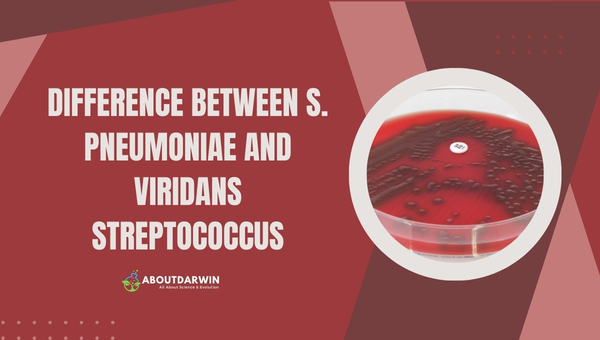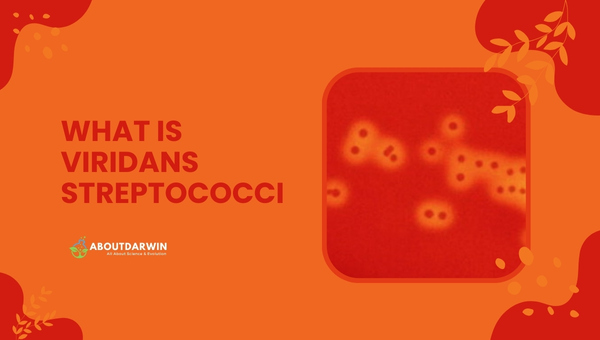Physical Address
304 North Cardinal St.
Dorchester Center, MA 02124
As we navigate through the complex world of bacteria, two names often pop up: S. pneumoniae and Viridans Streptococci. To an untrained eye, these microorganisms might seem quite similar – but they’re distinctly different in how they interact with our bodies.
In this article, we are going to dissect the differences between these two bacterial species. By understanding their characteristics, associated health problems, and how medical professionals treat them.
You’ll gain a solid foundation of knowledge that can help inform your personal health discussions in the future. So, let’s get started on this journey into the microscopic world!
Contents
When we look at bacteria, it’s essential to understand how different strains vary from each other. This notion is particularly true when considering S. pneumoniae and Viridans Streptococcus.

Despite both being part of the larger Streptococcus family, their pathogenic manifestations differ quite a bit. S. pneumoniae is highly pathogenic and often results in serious infections such as pneumonia, meningitis, and sepsis — particularly in individuals with a weaker immune system.
On the other hand, while Viridans Streptococcus can cause diseases such as dental caries and endocarditis, its overall potential for harm is less compared to S. pneumoniae due to its lower virulence factors.
| S.pneumoniae | Viridans Streptococcus | |
|---|---|---|
| Pathogenicity | High | Lower |
| Common Infections | Pneumonia, meningitis, sepsis | Dental caries, endocarditis |
The differences between these two bacteria extend even to how healthcare providers treat them. While penicillin remains effective for many pneumococcal infections caused by S. pneumoniae despite increased resistance over the years; however due to this resistance, alternative antibiotics like levofloxacin are also used when required.
Conversely, infections resulting from Viridans Streptococcus are usually managed with a combination of antibiotics and possible surgical intervention (in cases of severe infective endocarditis), depending on the disease’s site and severity.
Simply put – no “one size fits all” strategy exists when it comes to battling bacterial infections!
| S.pneumoniae | Viridans Streptococcus | |
|---|---|---|
| Treatment | Penicillin, Levofloxacin (if resistant) | Combination antibiotics, possible surgical intervention |
Also Read: DNA: Differences Between Replication and Transcription
Understanding bacteria is crucial to staying informed about our health, particularly when it comes to Streptococcus pneumoniae, or S. pneumonia, as it’s commonly referred to.
This bacterium is usually found in our respiratory tract, and while it generally means no harm, under certain circumstances, it can turn into a harmful agent causing infections.
S. pneumoniae has been known to be the leading cause of community-acquired pneumonia and other health issues like meningitis or ear infections, particularly impacting the very young and elderly population groups.
In the world of microbiology and medicine, S. pneumoniae represents a massive challenge due to its complex characteristics and wide-ranging impact on human health.
Bacteria are everywhere, including on and inside our bodies. Viridans Streptococci is a group of bacteria commonly found in the human mouth, respiratory tract, gastrointestinal tract, and urogenital area.
Most of the time, these organisms are harmless and live in harmony with us. But sometimes conditions change, and these bacteria can cause problems. Here’s a breakdown of some health issues that can occur associated with this group of bacteria:
It’s important to note that health problems usually occur only when these organisms get into places they aren’t supposed to be or proliferate excessively under certain conditions.
Viridans Streptococci is a vast group of bacteria primarily residing in the human mouth, respiratory system, gut, and urinary tract.

They are usually harmless and contribute to our body’s microbial flora under normal circumstances. These bacteria play an important role in maintaining the balance in our bacterial ecosystem and preventing the growth of harmful species.
However, while they’re normally benign partners in our body’s ecology, if they gain entry into areas where they do not belong—like the bloodstream or inner layers of our heart-they can cause severe infections like endocarditis or septicemia. So their classification as friendly inhabitants of our body doesn’t free them from posing potential threats.
Also Read: Unraveling C.difficile: An Insight into Biochemical Testing
Several health conditions can arise in association with Viridans Streptococci. Despite its common presence in the human body, under certain circumstances, it can cause serious infections:
Remembering that a healthy immune system often keeps these bacteria from causing illness, individuals with compromised immunity remain at risk.
Here is a markdown table that compares and contrasts Streptococcus pneumoniae with Viridans streptococci:
| Characteristic | S. pneumoniae | Viridans Streptococcus |
|---|---|---|
| Capsule | Yes, distinct polysaccharide capsule | Usually not encapsulated |
| Shape | Lancet-shaped diplococci | Usually cocci in chains |
| Optochin Sensitivity | Sensitive (inhibited by optochin) | Resistant |
| Bile Solubility | Soluble (lysed by bile) | Insoluble |
| Hemolysis on Blood Agar | Alpha-hemolytic (partial, greenish) | Alpha-hemolytic (but less distinct) |
| Quellung Reaction | Positive (capsule swells with specific antisera) | Negative |
| Major Habitat | Nasopharynx | Oral cavity, GI tract, genitourinary tract |
| Pathogenicity | High (causes pneumonia, meningitis, otitis media) | Low (usually opportunistic pathogens) |
Bile solubility is a rapid, confirmatory test often used to differentiate S. pneumoniae from viridans streptococci, in which a drop of 10% deoxycholate is placed on an area of growth.
S. pneumonia has several virulence factors that allow it to cause infections in humans. A polysaccharide capsule interferes with phagocytosis by inhibiting the binding of complement C3b to the cell’s surface. Pneumococcal proteins also play a large role in the virulence of the bacteria
They divide in one plane and thus occur in pairs or (especially in liquid media or clinical material) in chains of varying lengths. S pneumoniae appears as a 0.5-1.25 μm diplococcus, typically described as lancet-shaped but sometimes difficult to distinguish morphologically from other streptococci.
Pneumococcal [noo-muh-KOK-uhl] disease is a name for any infection caused by bacteria called Streptococcus pneumoniae or pneumococcus.
pneumoniae (also known as S. pneumococcus), rounded bacteria (cocci) that usually occur in pairs and sometimes short chains. Their blue color indicates they are Gram-positive.
Also Read: Proteus Mirabilis: Understanding Biochemical Identification
In conclusion, understanding the differences between S. pneumoniae and Viridans Streptococci is crucial in the fields of health and medicine. Both play different roles in our bodies, causing distinct illnesses under different circumstances.
Having a grasp of these two forms of bacteria not only equips us with adequate knowledge to tackle them but also enables us to communicate our health issues with healthcare providers effectively.
Finally, it’s important to note that while both can cause disease, they vary significantly in their virulence factors and necessary treatment approaches.
By staying educated on the subject matter and taking essential preventative measures, we can better manage our health and promote wellbeing within our communities.